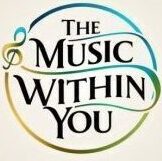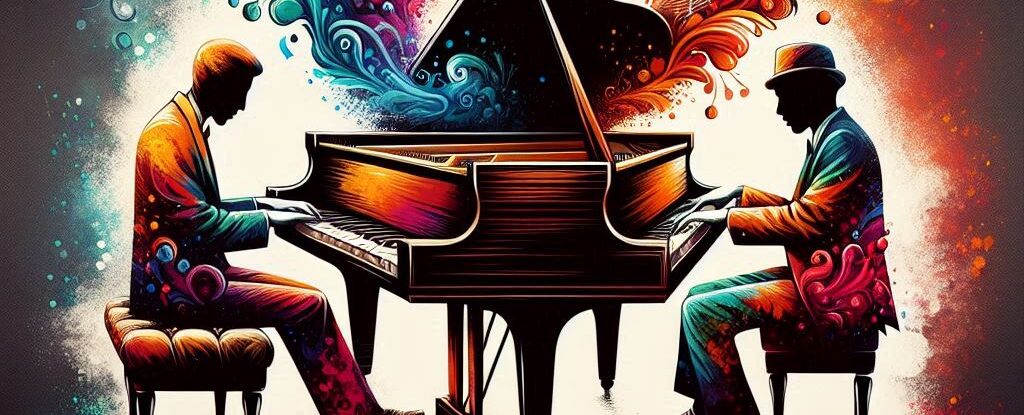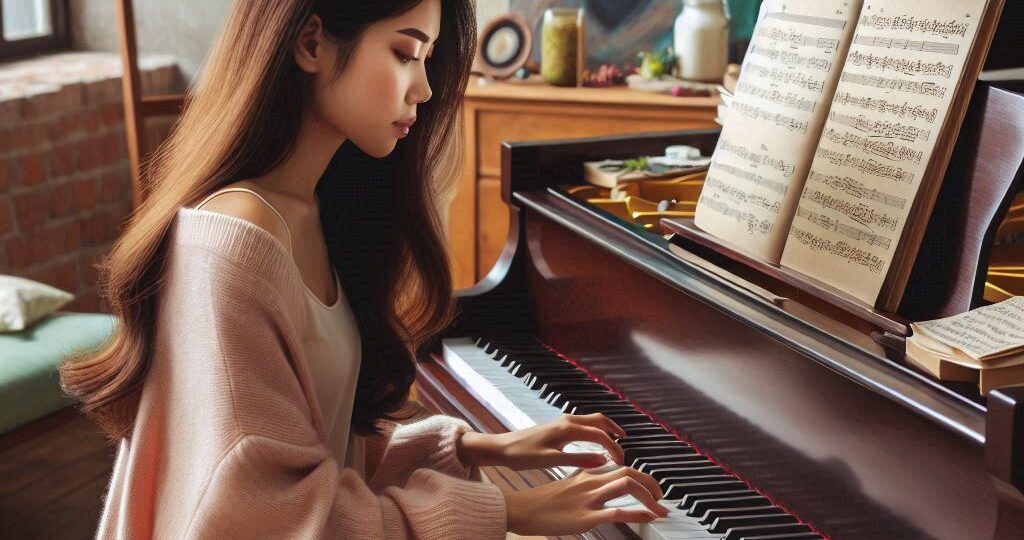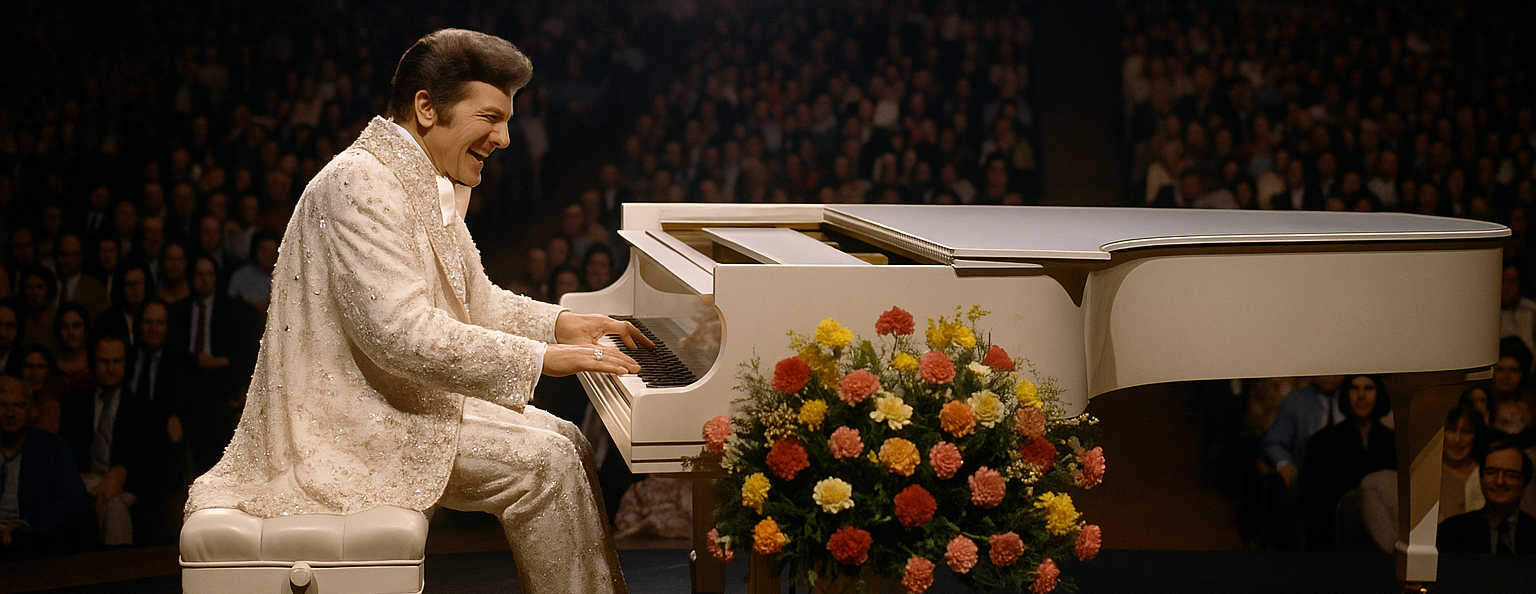Jazz and Classical music, as different as they may seem, share a vast, intertwined history that shapes their characteristics. Jazz thrives on improvisation, bringing a vibrant energy that’s spontaneous and full of surprises. It’s all about those catchy swing rhythms and unexpected blue notes that make your feet tap and your mind wander.
Classical music, on the other hand, is the master of structure and form. It’s about precision, with every note carefully placed to create harmonies that are both timeless and profound. Listening to a classical piece can feel like diving into a meticulously crafted sonic journey—every movement leading to a crescendo that leaves you in awe.
Liberace was a musical genius combining both classical and jazz music on the piano. This is an older recording of his and you will be amazed at what he does. For us older folks, most of us would remember Liberace as a very flamboyant person but when he started to play, WOW! He was incredible. Take a few minutes and see what he does as he combines both classical and jazz in his playing.
Despite their differences, these genres occasionally meet at crossroads. Jazz compositions sometimes borrow structures from classical pieces. Meanwhile, many classical musicians have looked to jazz for ideas on rhythm and phrasing.
Understanding how cultural and historical contexts shape these genres is crucial. Jazz roots itself in African American communities, evolving in the streets of New Orleans. It’s a genre born from a mix of cultural expressions. Classical music, with its European origins, often reflects the ornate and grandiose societal moods of its time.
But here’s where it gets interesting—musical theory isn’t strictly an either-or. These genres overlap in fascinating ways. Think of how they both utilize scales, even if jazz loves to bend and twist them into something new. Embracing the diversity in these styles doesn’t just enrich your playing; it broadens your appreciation for music’s endless possibilities.
Enhancing Technical Skills Through Variety
Diverse musical repertoires push pianists beyond comfort zones, breaking monotony in practice routines. Mixing Jazz and Classical pieces can sharpens both technique and adaptability.
In the world of Classical music, precision and discipline are the cornerstones. Pieces demand meticulous attention to every note, every articulation. This rigidity hones finger strength, coordination, and technical precision.
On the flip side, Jazz thrives on creativity. It invites pianists to break free from written scores and dive into improvisation, nurturing spontaneous thinking. Being able to invent melodies on the spot improves a pianist’s adaptability and musical intuition.
Consider the journey of great pianists who straddle both worlds. Musicians like Keith Jarrett, who master both Classical rigor and Jazz freedom, find themselves with a broader palette to express themselves artistically. Their hands move effortlessly across keys, transitioning from a Beethoven sonata to a lively jazz improvisation without missing a beat.
Incorporating both styles into practice sessions offers holistic growth. Classical pieces build foundational skills, while Jazz exploration encourages innovation. This combination not only improves technical prowess but also enhances a musician’s emotional expression and storytelling capabilities.
Emotional Expression and Storytelling
Jazz and Classical music are both powerful mediums for conveying emotions and telling stories, albeit in their own unique ways. Jazz, with its improvisational nature, gives musicians the freedom to express emotions on the fly. There’s something magical about how a jazz solo can reflect a musician’s mood, each phrase acting as a spontaneous brushstroke on a musical canvas.
Classical music, by contrast, offers depth through its structured form and rich compositions. Each piece is a narrative crafted by the composer, inviting performers to interpret and convey different emotional layers. Whether it’s the sorrowful adagio of a symphony or the uplifting allegro of a sonata, classical music invites a performer to step into diverse characters and emotions.
Engaging with both styles nurtures cognitive and emotional growth. Learning to interpret the emotional cues in a Mozart concerto enhances one’s emotional intelligence. Meanwhile, taking on a jazz piece can improve one’s ability to adapt emotionally and creatively. Each performance becomes a storytelling opportunity, allowing musicians to deeply connect with their audience.
As pianists explore these genres, they don’t just learn to play notes; they learn to communicate and connect through music. This willingness to explore emotional expression fosters a deeper connection to music and can make performances all the more compelling. By embracing the diversity within these genres, pianists can enrich their musical identities and storytelling abilities.
The Cultural Significance and Impact
Jazz and Classical music have shaped cultural narratives and societal movements for centuries. Jazz emerged in the heart of African American communities, serving as a voice for social change and personal identity. It was, and still is, a symbol of freedom and resilience, resonating with themes of improvisation and innovation.
Classical music, with its roots in European tradition, reflects the transformative periods it has traversed. From the complexity of Baroque to the emotional depth of the Romantic era, classical compositions mirror the aspirations and conflicts of their times, acting almost like historical time capsules.
Both genres have had a significant global reach. Jazz, with its infectious rhythms, has influenced music cultures worldwide, while Classical music has been embraced across continents, influencing everything from film scores to contemporary music.
In bridging these cultural gaps, musicians can leverage a diverse repertoire to advocate for understanding and inclusivity. By blending these styles, pianists have the chance to create new musical dialogues, blending tradition with contemporary insights.
Playing a mix of Jazz and Classical pieces not only enriches one’s music collection but also places performers in a position to become cultural ambassadors. They showcase how music transcends borders, creating connections that are as powerful as they are beautiful.
Conclusion: The Future of Piano Through a Diverse Lens
Recapping the benefits of diverse piano repertoire underscores the exciting possibilities awaiting pianists who embrace variety. By engaging with both Jazz and Classical music, musicians find themselves in a dynamic space where creativity thrives and technical skills sharpen.
The future of piano playing holds immense potential for genre-blending and musical innovation. Younger generations of pianists are increasingly curious about mixing styles, taking the old and infusing it with the new to create something truly original.
Pianists are encouraged to push beyond conventional genre boundaries. Exploring different musical landscapes can lead to unexpected discoveries, energizing one’s passion for the instrument and introducing fresh perspectives.
In embracing diversity, pianists nurture richer, more varied musical experiences. Such diversity enriches performances and deepens the connection between musician and audience, ensuring music continues to be a vibrant and evolving art form.





